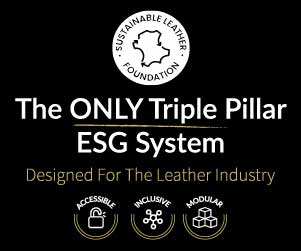Market Intelligence—01.11.22
Macroeconomics
The world is increasingly driven by politics. The long phase in which liberal thought dominated and spread (with all its defects) seems to be coming to an end. Some regimes have seen this as a threat and seem to have been working for some time to destabilise democratic, liberal societies and build a counter-movement.
History has shown that such developments are rarely economically successful and thus develop corresponding risks. Liberal democracies are still economically more successful and most of their societies live at a higher level of prosperity.
The crises that threaten inflation, led by sharply increased energy prices, take away parts of this prosperity and thus lead to growing discontent, which in turn threatens the stability of democracies. If this trend cannot be stopped as soon as possible, things will not calm down.
In the economy, inflation remains the dominant issue. The European Central Bank raised its key interest rates again by 0.75%, but correct though this decision may be, it has come too late. The problem remains that the independence of the ECB is no longer guaranteed. At the moment, there is a lot of pressure to increase prices in the pipeline and therefore it must be assumed that inflation will remain high, at least over the winter, with the corresponding consequences. Statistically, it will probably fall again afterwards, but it will take time to restore the purchasing power and confidence of ordinary consumers.
Fortunately, gas prices fell sharply on the spot markets last week. In some cases, they even reached negative values in the very short term, as happened in the oil markets in 2020. On the futures market, gas remains relatively expensive for the winter in Europe, but the mild temperatures and the massive purchase of LNG have already eased the situation considerably and the free markets have once again proved to be the best indicators of the actual market situation.
There remains the problem of political intervention and, indeed, of the implementation of measures that many governments are planning. High energy prices create two kinds of pressure. On the one hand, they siphon off purchasing power from private households and, on the other hand, they make production sites in countries that suffer particularly from high prices increasingly unattractive. Intervention in the markets always leads to the obscuring of reality and, even if it is done with good intentions, it prevents rapid adjustment. The fact remains that we do not have a shortage of energy worldwide, but only a lack of storage and transport capacity. The time factor then plays an additional role.
Overall, equity markets are defending themselves very well. Of course, the favourites have changed. The majority of technology stocks, the big winners of the past, are losing more at the moment. The losers of the past under the leadership of the energy companies are the big winners with sometimes bizarre quarterly profits. The commodity markets in general reflect the expectation of a weakening economy and in some cases they already signal a recession.
Even though China reported positive economic growth for the last quarter, one has to have doubts about the data. All the information you can get directly from China shows big problems in local consumption and, of course, in the real estate market. The zero covid policy, reaffirmed by Xi Jinping, continues to inhibit economic activity and consumption. Since the winter can hardly be expected to bring a decline in infections, the problem remains as a burden on the mood across the country. Another problem is the tension in trade relations between the US and China, which are also causing negative influences in many sectors. Without a solid recovery in China, it will not be easy for the global economy to emerge from the current difficult situation.
The price of gold continues to languish. No matter how high inflation goes, which used to be a guarantor of rising precious metal prices, at the moment people obviously prefer to buy luxury goods rather than try to protect their savings with investments in precious metals. The oil price continues to move around the $90 mark, with a slight upward trend in recent weeks.
Leather Pipeline
Further company results have come to light that demonstrated how much of a change there has been in the global economic situation in 2022. Further large corporations have had to report in the last two weeks that their inventories have risen sharply and sales have not even come close to meeting expectations. If you combine this with the very subdued expectations for Christmas business, then it becomes clear that at the moment almost all efforts are going into reducing stocks before new orders can be considered. First of all, space must be created and, of course, in some cases the necessary financial leeway to make decisions for the future. The majority of current orders are limited to what is necessary and no more than that.
We hear that major brands have so far ordered little more than 30%-50% of expected quantities from their manufacturers and suppliers. Officially, the planned figures that had been transmitted for the coming season will not be changed, but there is little guarantee. Frankly, the clock is ticking. It is already far too late for many decisions to make their way into the production chain. Therefore the mood on the producer side is very subdued.
Consumption has declined significantly in almost all world markets. This means that retailers are also sitting on large, unsold inventories. Increases in budget for 2022, decided in 2021, have already encountered falling sales. You plan 10% more and sell 10% less. If you go one step further, you can see from the quarterly reports of large brand manufacturers that they also have significantly increased inventories, many of which are still in warehouses. The more season-dependent the products, the bigger the problem.
Usually, in this situation, the raw material warehouses, which represent the beginning of the chain, would be empty and would fill again accordingly with the next movement in the well known accordion effect. However, we are now in a situation of full stocks among many producers of cattle hides because a general decline in the use of leather as a material has been putting a strain on lower-quality origins for some time now. In the current environment of shrinking sales, robust meat production and large stocks of hides, it would be negligent not to pay sufficient attention to the current situation and prospects.
Obviously, the large meat producers have been aware of the situation for some time. The investments by various large corporations in the production of collagen and gelatine as an alternative to the use of leather are not decisions made only to solve a short-term problem. Those who produce meat consequently also produce the by-products and have no choice but to look at all the alternatives for these.
For all those who move in the world of leather, the situation is extremely frustrating. After seeing light at the end of the tunnel again after a similar situation in 2020, caused by the pandemic, this new blow certainly leaves deep scars. With the recovery in 2021, the industry was actually full of energy, presenting leather as a sustainable, durable and valuable material and transmitting this message into the consciousness of consumers. The consequences of the war of aggression in Ukraine, the resulting inflation and the collapse of consumption are an extremely heavy burden in what was already very difficult environment.
However, we may still have a trump card up our sleeve. The arguments in favour of leather are many, if it is produced correctly and carefully. In particular, leather’s durability is appealing because this is the strongest argument you can have against plastic and against waste. In many applications, leather remains superior to artificial products in terms of its technical properties. This must be mentioned again and again. Let us not forget that there are areas such as the automotive sector where, for admittedly very dubious reasons, the decision against leather has already been made by many manufacturers and this is difficult to reverse owing to the implementation that has been going on for years. The leather that is no longer used in this sector and the raw material that is no longer needed for it must find other uses in the next few years.
There is little news from the splits market. Reduced production in the leather industry, especially in China and Europe, has significantly reduced the supply of lime splits. Prices have gone up and there is clear competition for the raw materials from the gelatine market. In addition, there is an increasing supply of finished products. We predict the end of the big bull market for this material in the coming months. The great shifts are beginning and will also leave their mark on this sector.
This sector is also affected by declines in consumption, although low prices, fashion and reduced supply still protect it to some extent.
In the case of sheepskin materials, the overall situation is not much better. Specialties and high-quality skins still find customers. Here, too, the market for luxury goods shows no signs of fatigue and the skins that have special characteristics continue to find their market at acceptable prices. However, our discussions with various producers in Europe revealed an additional interesting component. In recent years, lambskins could not be collected, sorted and preserved at cost-covering prices and thus more and more skins went into disposal. This was hardly noticeable on the market, which still had more than sufficient stock waiting for customers.
This left the impression that the available quantity was infinite. In the meantime, however, almost all of the accumulated stocks have been sold and at the same time there is a slight increase in interest in lamb nappa garments. Quite a few manufacturers were therefore very surprised when suddenly their sources of large quantities at the cheapest prices were suddenly no longer able to supply. We do not see this as a big turnaround; also in this area falling consumption weighs on retailers. Nevertheless, it shows that there are always new developments and that leather as a material is still alive.
We tend to remain on the pessimistic side in assessing the situation. The leather pipeline must be forced to adapt for a certain period of time to changed conditions that go far beyond the usual assessment of the business situation. The consequences are far-reaching and the situation in different regions of the world is very different. Energy costs will become a danger for some producers very soon. Shifts in production are already clearly visible. Consumption will probably not meet expectations for months to come.
All of this is a very toxic combination in business. In addition to all the challenges in day-to-day operations, it must be assumed that not everyone in the leather industry can survive these difficulties. Financial institutions are also seeing the problems, interest rates are rising, and banks’ risk aversion is constantly increasing. At the same time, if the circumstances lead to a higher need for credit in a number of companies, everyone can work out for themselves how the story will end. None of this will happen overnight.
At the moment we have the impression that almost everyone along the leather pipeline wants to bring the year 2022 to an end. This is fine, but an honest examination of the challenges for 2023 will probably indicate very complicated solutions for some.












